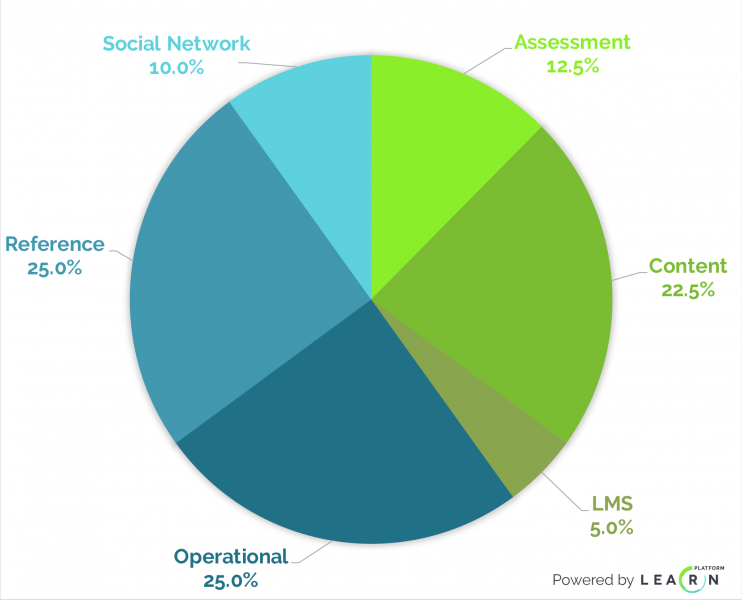What’s Trending in New Ed-Tech ‘Top 40’ Digital Tools

The top five digital tools accessed most often in school districts in 2017-18 were all Google products—including YouTube, according to research by Lea(r)n Inc. on more than 2,000 ed-tech tools used in K-12 schools.
The “Ed-Tech Top 40” analysis is based on real-time online activity from over 300 schools and districts during the school year. It was generated from more than 2 billion data points using a plug-in on Google’s Chrome browser that identifies what’s being used in schools.
The average U.S. school district with more than 1,000 students accessed 548 ed-tech tools in the last school year, according to the analysis by Lea(r)n, which operates LearnPlatform, a management system that organizes, streamlines, and analyzes ed-tech utilization.
The company identifies the individual products that were most popular and groups them by category, in its report, which ranks based on the percentage of users for a tool. The top two products are considered operational tools that streamline operations: #1 is Google Docs with 89 percent of users and 78 percent accessing Google Drive (#2).
Social network products have gained the most ground in usage—up 5 percentage points—since December 2017, the first time the study was done. Pinterest (#11) outpaced Facebook (#13).
Meanwhile, digital tools in the “content” category dropped 5 percentage points; the top content tools are YouTube (#3) and ABCya! (#14). Open educational resources are included in the product library, which is an aggregate of all the tools used by schools registered on the LearnPlatform, according to Karl Rectanus, Lea(r)n’s co-founder and CEO.
Five assessment tools are on the list and Kahoot! (#6) again leads this category, which declined by 2.5 percent compared to the first time this was studied.
Dictionary.com (#12) leads the reference category, while Google Classroom (#3) is the top LMS.
Although all the research is based on data generated from a Chrome browser, the results are “fairly representative across the ed-tech landscape” of all the tools being used, regardless of the operating system a district endorses, according to Daniel Stanhope, the vice president of research and analytics for Lea(r)n.
The findings, released in a webinar, demonstrate that school districts have an opportunity to understand “what’s actually happening” with the ed-tech tools used in their schools.
Stanhope explained important points about the research. The data do not represent an evaluation of impact or effectiveness of these products, he said. The results could not be influenced by advertising, paid sponsorship, or by the companies listed. And the ranking is not a comprehensive analysis of the depth, type or level of usage of any products for learning outcomes or other goals.
Follow EdWeek Market Brief on Twitter @EdMarketBrief or connect with us on LinkedIn.
See also:

cloriquine https://chloroquineorigin.com/# hydroxychloroquine wiki